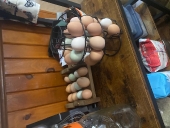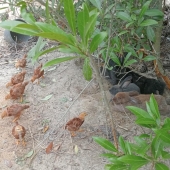

Robert Ray wrote:Will be looking at a piece of property in Wahalla ND end of the month, what town are you in?


Nancy Reading wrote:Sound like an opportunity that it would be a pity to miss, to re create the local convenience store that you all want.
My first suggestion is to come up with a business plan. It doesn't have to be super detailed but you do need to make sure that you can cover wages, unless you rely entirely on volunteers, and that can work of course. I run a little rural store (not as big as the one you plan) and holidays are a distant dream.
You may already have thought of all this if so I apologise, but even a charitable investor will want to make sure that the money is going to a good place.
As well as the purchase price, you will have equipment and refurbishment costs, maybe advertising and internet site costs.
Initial stock can be quite significant. Ours is roughly 10% of our annual turnover. A little high because the 'get you out of trouble' category can be slow (but is really appreciated when people need it today!)
Don't forget working capital. This is where most small businesses fail. Ours is about 5% of turnover, but runs pretty short out of season!
Once you have a ball park figure to work with, you will have more idea as to how feasible the whole thing may be. In the UK there is funding available for local food, community shops. Have a look at the Plunkett Foundation. There may be similar organisations in the US, maybe there is something on grants.gov
As well as figures pictures will help - can you visualise how the store will look, lots of photos of happy families shopping, maybe some quotes as to how great the store will be. Stories help a lot if you go for a crowd funding route.
Good luck!
Anne Miller wrote:I am not an investor.
Have you talked to the owner of the building? To me that is my first question. How much rent do they want or are they willing to go into this venture with you.
Who will your customers be?
Are there things you can do to get the public interested in buying from you.
If you do get this business set up start with a small inventory and build up from that with the profits.
If there is a nearby campground sell firewood, hot dog, buns, etc.... Do you get my drift?
Bread, milk, diaper and sort drink comes to mind.
 Gas and coffee and basics first, that would be a HUGE benefit to many of our commuters. Scaling up isn't always ideal in a small community anyways. We need useful.
Gas and coffee and basics first, that would be a HUGE benefit to many of our commuters. Scaling up isn't always ideal in a small community anyways. We need useful.

Zeus forero wrote:I didn't have to bury the fence and the rabbits made an amazing burrow at the base of three in their enclosure, after two months I started letting the rabbits free range through the farm and they always return to their burrow.
I guess I got lucky with well behaved rabbits but it could also be that they realized the only water nearby is inside the fenced area.
Anne Miller wrote:Harvester ants are usually responsible for missing seeds. Do you have those in your part of the world?
Was it an especially rainy season? Maybe the seeds washed away.